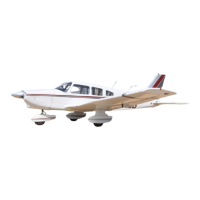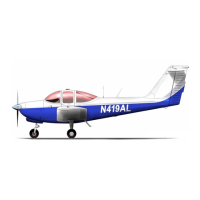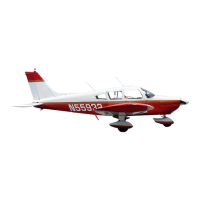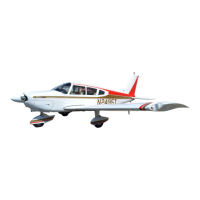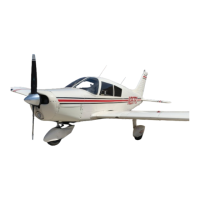THE NEW PIPER AIRCRAFT, INC.
PA-32-301FT / 301XTC
MAINTENANCE MANUAL
PAGE 4
Jun 1/03
1J16
20-00-00
5. Identification of Fluid Line
s
(Refer to Figure 4.)
Aircraft fluid lines are identified by color code markers, words and geometric symbols. The markers
identify each line`s function, content, primary hazard, and the direction of fluid flow.
Most fluid lines are marked with 1 inch tape or decals. Paint is used on lines in the engine induction
system.
Certain lines may also be identified as to the specific function within a system. For example: DRAIN,
VENT, PRESSURE or RETURN.
Lines conveying fuel may be marked FLAM. Lines containing toxic materials are marked TOXIC. Line
containing physically dangerous materials, such as oxygen, nitrogen, or freon, are marked PHDAN.
The aircraft and engine manufacturer is responsible for the original installation of identification markers,
Aircraft maintenance personnel are responsible for their replacement when it becomes necessary.
Tapes, paint, tags and decals are placed on both ends of a line and at least once in each compartment
through which the line runs. Identification markers are also placed immediately adjacent to each valve,
regulator, filter or other accessory within a line.
6. Flareless
Tube Assemblies
The use of flareless tube fittings eliminates all tube flaring. An operation, referred to as presetting, is
necessary prior to installing a new flareless tube assembly. Presetting is performed as follows:
A. Cut tube to correct length. Ensure ends are perfectly square. Deburr inside and outside of tube. Slip
nut, then sleeve, over the tube. (Refer to Figure 5, Step 1.)
B. Lubricate fitting and nut threads as specified in table contained in Figure 5.
C. Place fitting in a vise (refer to Figure 5, Step 2). Hold tubing firmly and squarely on seat in fitting.
(Tube must bottom firmly in the fitting.) Tighten nut until cutting edge of sleeve grips tube. This point
is determined by slowly turning tube back and forth while tightening nut. When tube no longer turns,
nut is ready for final tightening.
D. Final tightening depends upon type and size of tubing. On aluminum alloy tubing up to and including
half inch outside diameter, tighten nut from 1 to 1-1/6 turns. On aluminum alloy tubing over half inch
outside diameter, or steel tubing, tighten nut from 1-1/6 to 1-1/2 turns.
E. After presetting the sleeve, disconnect tubing from fitting and check the following points (refer to
Figure 5, Step 3):
(1) Tube extends 3/32 to 1/8 inch beyond sleeve pilot to prevent blow off.
(2) Sleeve pilot contacts tube. A maximum clearance of 0.005 inch for aluminum alloy tubing, or
0.015 inch for steel tubing, is acceptable.
(3) A slight collapse of tube at sleeve cut is permissible. No movement of sleeve pilot, except
rotation, is permissible.
